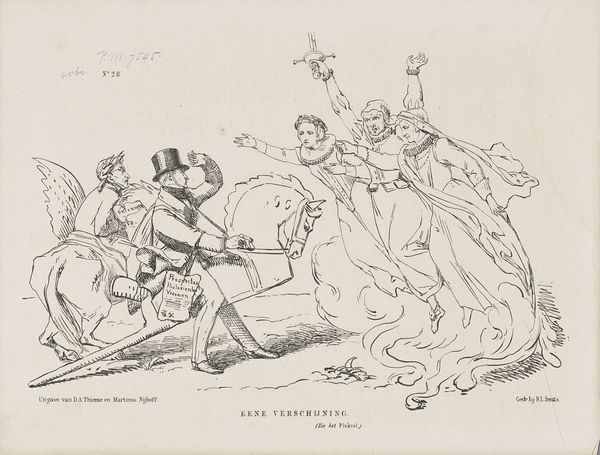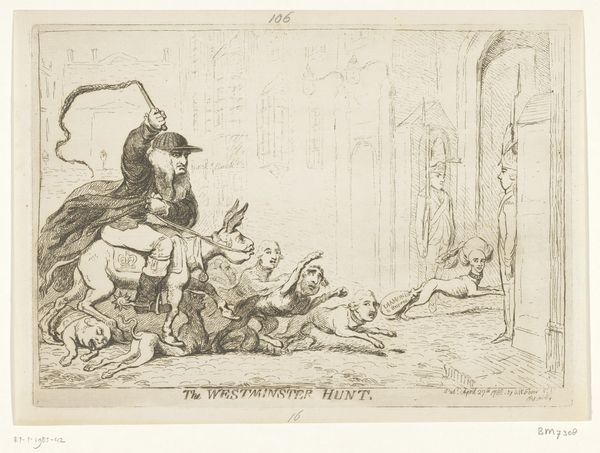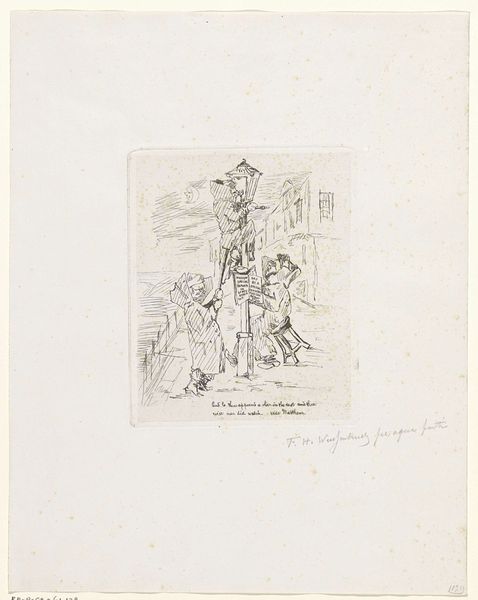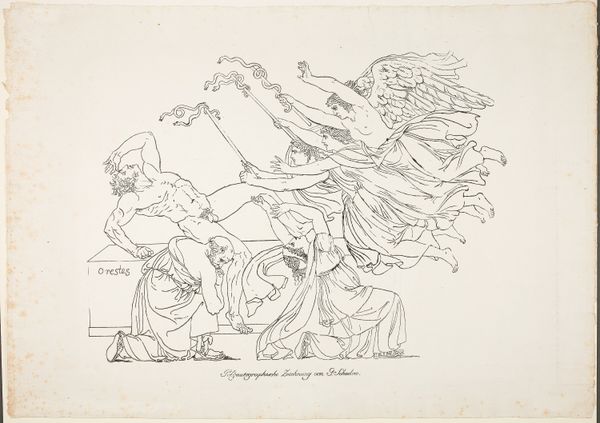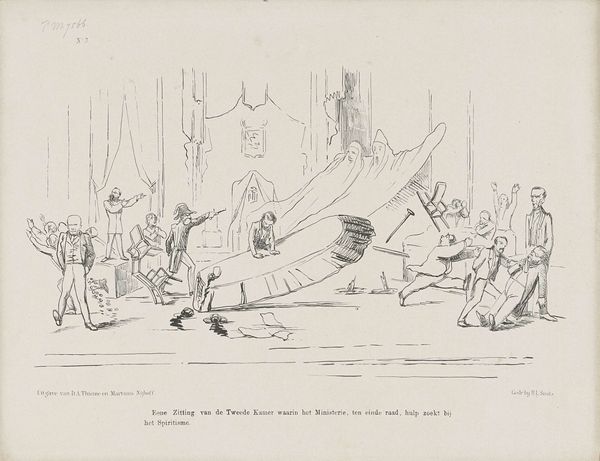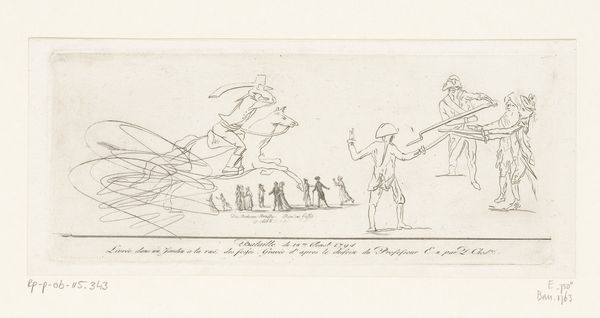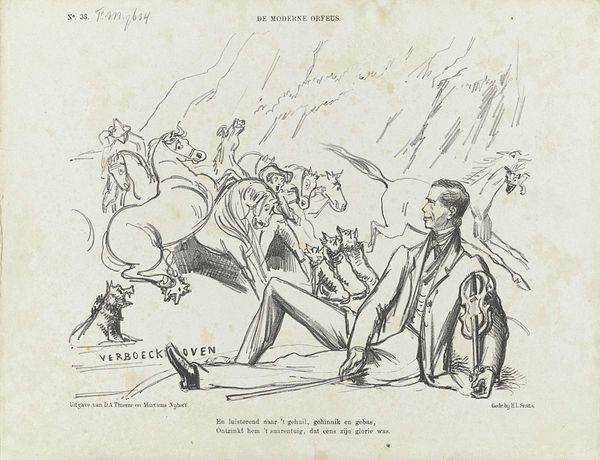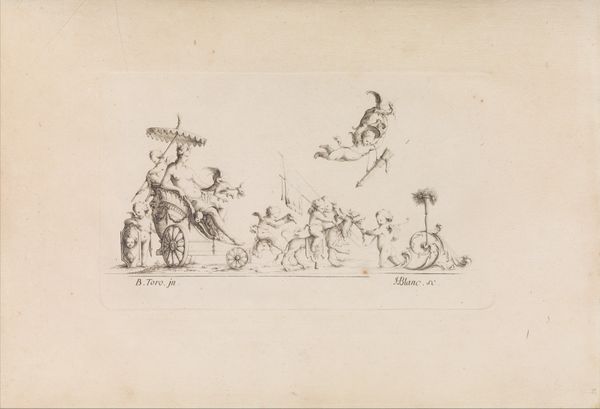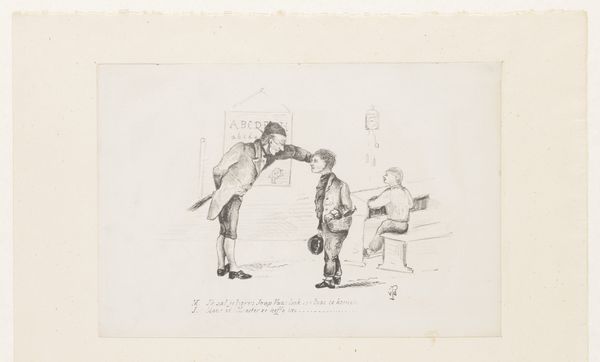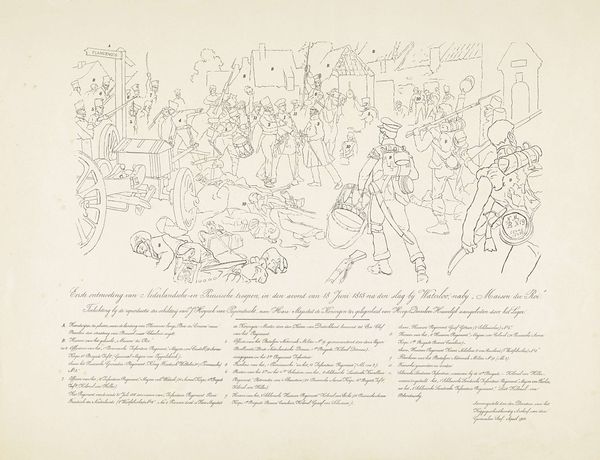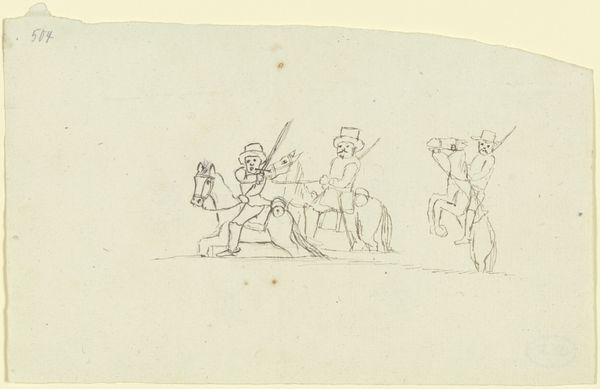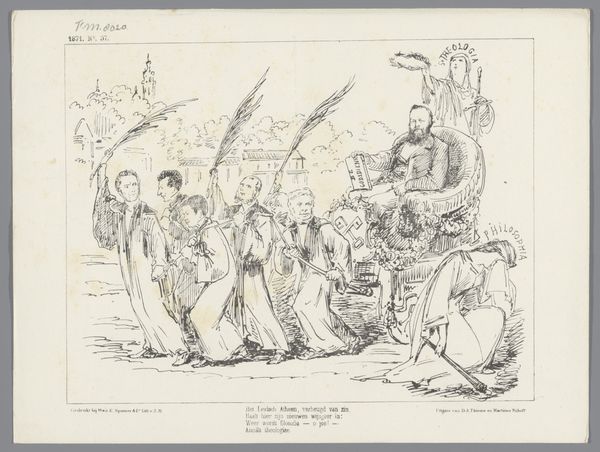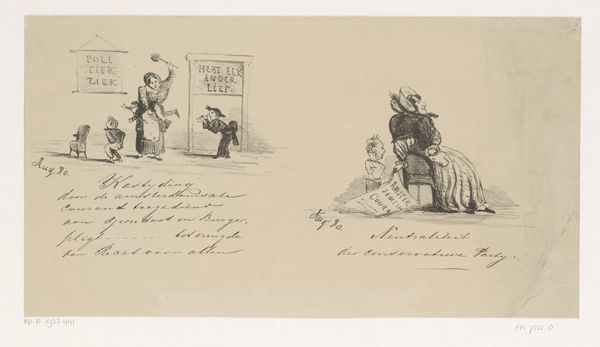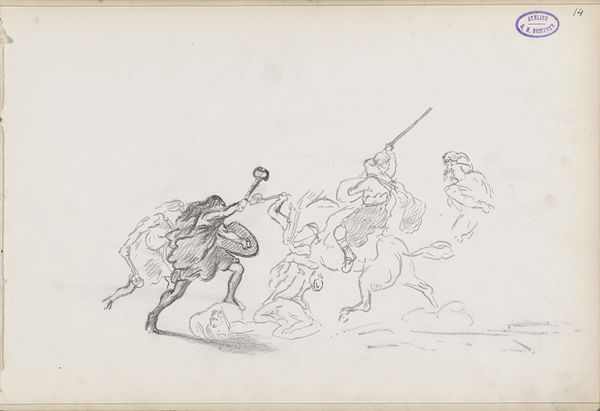
drawing, print, paper, ink
#
drawing
#
comic strip sketch
#
quirky sketch
#
narrative-art
# print
#
caricature
#
paper
#
personal sketchbook
#
ink
#
idea generation sketch
#
sketchwork
#
ink drawing experimentation
#
romanticism
#
sketchbook drawing
#
genre-painting
#
storyboard and sketchbook work
#
sketchbook art
#
initial sketch
Dimensions: height 265 mm, width 330 mm
Copyright: Rijks Museum: Open Domain
Editor: This is an ink drawing from 1829 titled “Spotprent over militaire bureaucratie,” or “Cartoon about military bureaucracy,” by an anonymous artist. It’s quite whimsical. The figures look a bit like they are floating up steps to nowhere, perhaps towards some kind of allegorical figure of glory? What do you see in this piece? Curator: This print offers a potent critique of power structures within the military. The figures ascending the staircase, labeled "The Stairway of Honor," highlight how ambition and hierarchy were perceived at the time. Note the bags of money near the steps - could they represent the financial incentives driving military careers, hinting at corruption? Editor: So it's not simply about honor, but about ambition and potentially corruption, even? Curator: Exactly. Think about the social context: 1829 was a time of shifting power dynamics. This caricature probably resonated deeply with those who felt disillusioned by the military and its often-rigid structure, where advancement might depend more on who you know than your actual achievements. Also, observe how the artist presents a female figure in armor amongst clouds. Is she glory, a protector, a manipulator or simply another level to climb? Editor: That's fascinating, especially how the visual language—the exaggerated figures and symbolic elements—speaks to broader anxieties about social mobility and power. So, the artwork operates as more than just a humorous sketch; it’s a commentary on the times. Curator: Precisely. It invites us to question the supposed virtues of military service, pushing us to consider who truly benefits from these institutions, and at whose expense. The print asks whether glory is simply a reward earned through merit or rather gained by navigating complex social systems, as relevant now as it was then. Editor: I never thought about prints in that light, but the reading we gave to Romanticism mentioned many artist mocking and criticizing social and political elites. Thanks for bringing to my attention that Romanticism also have an edgy and criticizing facet!
Comments
No comments
Be the first to comment and join the conversation on the ultimate creative platform.
